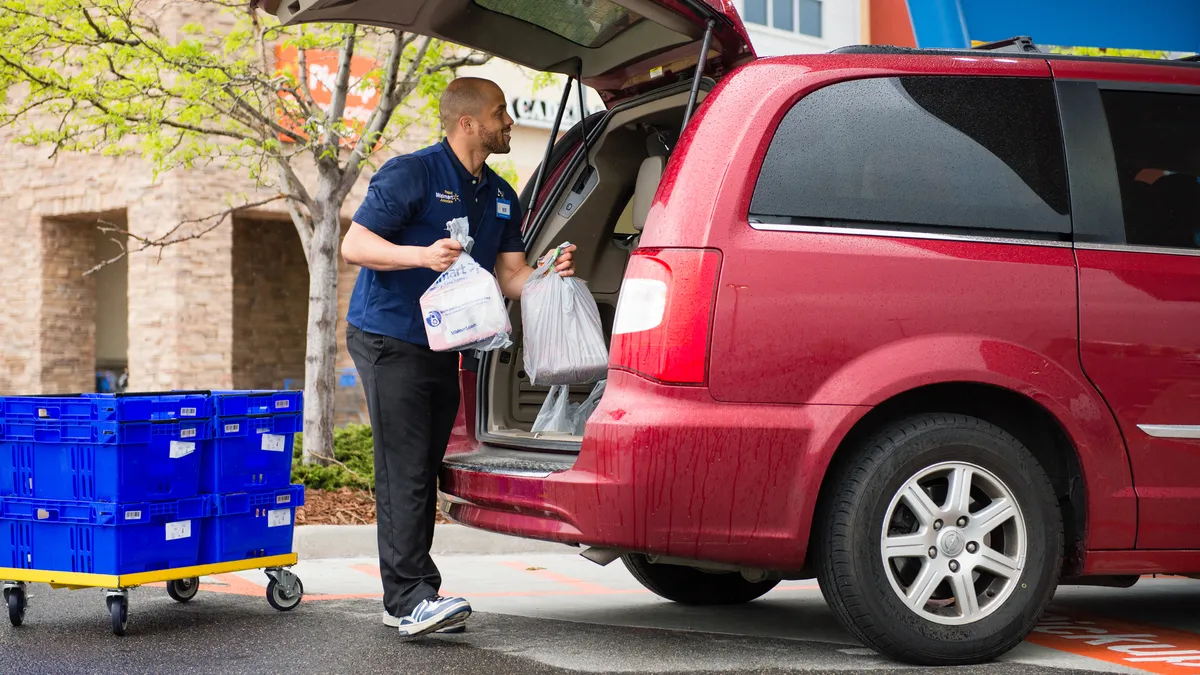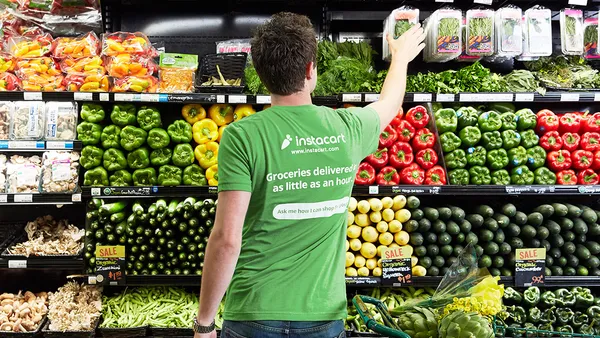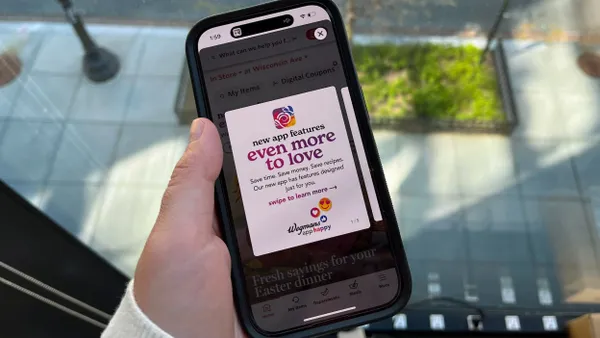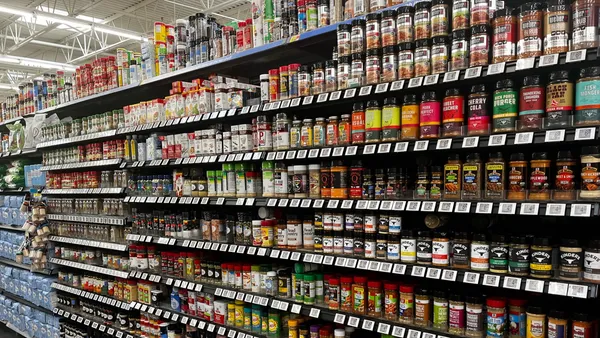Dive Brief:
- Consumers are putting a high priority on safety and speed when they place and pick up orders for groceries and other products, with 69% wanting to see for themselves that store employees are following social distancing measures as they handle their order, according to research conducted by Rakuten Ready, a provider of predictive order-management technology for grocers and other retailers.
- Nearly 80% of respondents said they don’t want to have to wait to collect their order when they arrive at a retail location to pick it up. Three-quarters of respondents said they want to know exactly when their order is ready to be picked up.
- Fifty-two percent of consumers who took part in the research look for signs that store workers are taking steps to ensure cleanliness, and 58% said that they have a preference for contactless payments. More than a third of respondents to the surveys indicated they would prefer it if their order was never touched.
Dive Insight:
As consumers continue to gravitate toward online ordering options to protect themselves from the coronavirus, they are pushing retailers to devise ways to make the process faster and more reliable. Retailers are rising to the challenge after initially stumbling as the pandemic picked up steam and discovered their e-commerce infrastructure couldn’t keep up with demand.
Many grocers have stepped up their use of technology that allows them to synchronize order preparation with when customers are likely to arrive in the pickup area.
Retailers such as United Supermarkets, Lowes Foods and SpartanNash adopted a system from Radius Networks that uses location-tracking to keep stores updated about where customers are as they near a store. Other retailers, like H-E-B and Kroger, are using a similar technology.
Shoppers have similar expectations in terms of safety and efficiency and when they go into stores to shop, Jaron Waldman, CEO of Rakuten Ready, told Grocery Dive. Retailers can respond by adopting some of the same tools they use to handle orders for pickup and delivery to improve the in-store experience, he said.
For example, retailers can let customers who intend to shop in a store use online systems to place deli orders and request custom baked goods and then ensure that the order is ready just when the customer wants it.
“A lot of this falls on in-house operations teams to go through every single aspect of their operational processes, and start to think about bringing mobile ordering technology into other aspects of the overall consumer experience inside the grocery store,” Waldman said.













